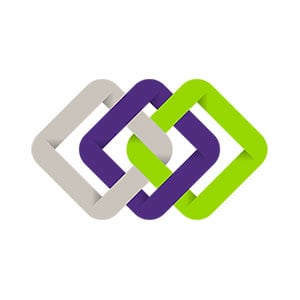-
Financial reporting and accounting advisory services
You trust your external auditor to deliver not only a high-quality, independent audit of your financial statements but to provide a range of support, including assessing material risks, evaluating internal controls and raising awareness around new and amended accounting standards.
-
Accounting Standards for Private Enterprises
Get the clear financial picture you need with the accounting standards team at Grant Thornton LLP. Our experts have extensive experience with private enterprises of all sizes in all industries, an in-depth knowledge of today’s accounting standards, and are directly involved in the standard-setting process.
-
International Financial Reporting Standards
Whether you are already using IFRS or considering a transition to this global framework, Grant Thornton LLP’s accounting standards team is here to help.
-
Accounting Standards for Not-for-Profit Organizations
From small, community organizations to large, national charities, you can count on Grant Thornton LLP’s accounting standards team for in-depth knowledge and trusted advice.
-
Public Sector Accounting Standards
Working for a public-sector organization comes with a unique set of requirements for accounting and financial reporting. Grant Thornton LLP’s accounting standards team has the practical, public-sector experience and in-depth knowledge you need.
-
Tax planning and compliance
Whether you are a private or public organization, your goal is to manage the critical aspects of tax compliance, and achieve the most effective results. At Grant Thornton, we focus on delivering relevant advice, and providing an integrated planning approach to help you fulfill compliance obligations.
-
Research and development and government incentives
Are you developing innovative processes or products, undertaking experimentation or solving technological problems? If so, you may qualify to claim SR&ED tax credits. This Canadian federal government initiative is designed to encourage and support innovation in Canada. Our R&D professionals are a highly-trained, diverse team of practitioners that are engineers, scientists and specialized accountants.
-
Indirect tax
Keeping track of changes and developments in GST/HST, Quebec sales tax and other provincial sales taxes across Canada, can be a full-time job. The consequences for failing to adequately manage your organization’s sales tax obligations can be significant - from assessments, to forgone recoveries and cash flow implications, to customer or reputational risk.
-
US corporate tax
The United States has a very complex and regulated tax environment, that may undergo significant changes. Cross-border tax issues could become even more challenging for Canadian businesses looking for growth and prosperity in the biggest economy in the world.
-
Cross-border personal tax
In an increasingly flexible world, moving across the border may be more viable for Canadians and Americans; however, relocating may also have complex tax implications.
-
International tax
While there is great opportunity for businesses looking to expand globally, organizations are under increasing tax scrutiny. Regardless of your company’s size and level of international involvement—whether you’re working abroad, investing, buying and selling, borrowing or manufacturing—doing business beyond Canada’s borders comes with its fair share of tax risks.
-
Transfer pricing
Transfer pricing is a complex area of corporate taxation that is concerned with the intra-group pricing of goods, services, intangibles, and financial instruments. Transfer pricing has become a critical governance issue for companies, tax authorities and policy makers, and represents a principal risk area for multinationals.
-
Succession & estate planning
Like many private business owners today, you’ve spent your career building and running your business successfully. Now you’re faced with deciding on a successor—a successor who may or may not want your direct involvement and share your vision.
-
Tax Reporting & Advisory
The financial and tax reporting obligations of public markets and global tax authorities take significant resources and investment to manage. This requires calculating global tax provision estimates under US GAAP, IFRS, and other frameworks, and reconciling this reporting with tax compliance obligations.

-
Transactions
Our transactions group takes a client-centric, integrated approach, focused on helping you make and implement the best financial strategies. We offer meaningful, actionable and holistic advice to allow you to create value, manage risks and seize opportunities. It’s what we do best: help great organizations like yours grow and thrive.
-
Restructuring
We bring a wide range of services to both individuals and businesses – including shareholders, executives, directors, lenders, creditors and other advisors who are dealing with a corporation experiencing financial challenges.
-
Forensics
Market-driven expertise in investigation, dispute resolution and digital forensics
-
Consulting
Running a business is challenging and you need advice you can rely on at anytime you need it. Our team dives deep into your issues, looking holistically at your organization to understand your people, processes, and systems needs at the root of your pain points. The intersection of these three things is critical to develop the solutions you need today.
-
Creditor updates
Updates for creditors, limited partners, investors and shareholders.

-
Governance, risk and compliance
Effective, risk management—including governance and regulatory compliance—can lead to tangible, long-term business improvements. And be a source of significant competitive advantage.
-
Internal audit
Organizations thrive when they are constantly innovating, improving or creating new services and products and envisioning new markets and growth opportunities.
-
Certification – SOX
The corporate governance landscape is challenging at the best of times for public companies and their subsidiaries in Canada, the United States and around the world.
-
Third party assurance
Naturally, clients and stakeholders want reassurance that there are appropriate controls and safeguards over the data and processes being used to service their business. It’s critical.
-
 ASPE Sec. 3041 Agriculture Understanding and applying the new ASPE Section 3041 AgricultureThe Canadian Accounting Standards Board (AcSB) has released new guidance on recognizing, measuring and disclosing biological assets and the harvested products of bio assets.
ASPE Sec. 3041 Agriculture Understanding and applying the new ASPE Section 3041 AgricultureThe Canadian Accounting Standards Board (AcSB) has released new guidance on recognizing, measuring and disclosing biological assets and the harvested products of bio assets. -
 Tax alert Agricultural Clean Technology ProgramThe Agricultural Clean Technology Program will provide financial assistance to farmers and agri-businesses to help them reduce greenhouse gas (GHG) emissions.
Tax alert Agricultural Clean Technology ProgramThe Agricultural Clean Technology Program will provide financial assistance to farmers and agri-businesses to help them reduce greenhouse gas (GHG) emissions. -
 Tax alert ACT Program – Research and Innovation Stream explainedThe ACT Research and Innovation Stream provides financial support to organizations engaged in pre-market innovation.
Tax alert ACT Program – Research and Innovation Stream explainedThe ACT Research and Innovation Stream provides financial support to organizations engaged in pre-market innovation. -
 Tax alert ACT Program – Adoption Stream explainedThe ACT Adoption Stream provides non-repayable funding to help farmers and agri-business with the purchase and installation of clean technologies.
Tax alert ACT Program – Adoption Stream explainedThe ACT Adoption Stream provides non-repayable funding to help farmers and agri-business with the purchase and installation of clean technologies.
-
Builders And Developers
Every real estate project starts with a vision. We help builders and developers solidify that vision, transform it into reality, and create value.
-
Rental Property Owners And Occupiers
In today’s economic climate, it’s more important than ever to have a strong advisory partner on your side.
-
Real Estate Service Providers
Your company plays a key role in the success of landlords, investors and owners, but who is doing the same for you?

-
Mining
There’s no business quite like mining. It’s volatile, risky and complex – but the potential pay-off is huge. You’re not afraid of a challenge: the key is finding the right balance between risk and reward. Whether you’re a junior prospector, a senior producer, or somewhere in between, we’ll work with you to explore, discover and extract value at every stage of the mining process.
-
Oil & gas
The oil and gas industry is facing many complex challenges, beyond the price of oil. These include environmental issues, access to markets, growing competition from alternative energy sources and international markets, and a rapidly changing regulatory landscape, to name but a few.
There’s no question the cloud is the way of the future. By moving business functions and activities to a third-party host—rather than housing them all within your organization--companies can benefit from increased flexibility, broader accessibility, enhanced security, heightened speed and lower costs. And needless to say, these are all assets in today’s business environment.
That said, as with every business reward, cloud adoption also introduces new risks. To realize all that the cloud has to offer, it’s important to effectively mitigate these risks by taking time to clearly identify and build a robust defense strategy around them.
If you approach the cloud in the right way, you’ll not only be able to realize its tremendous benefits, but you’ll be able to sleep better at night knowing that your business is protected.
How to protect yourself
While there are risks associated with using the cloud, it’s still something every forward-facing business should consider. Because nothing in today’s cyber environment is ever one hundred percent secure, the key is to mitigate the associated risks as best you can, so you can increase your chances of a safer cloud experience.
Three tips to get you started:

Conduct an assessment of your data
Before you can find the right cloud provider, you need to decide which data is going up in the cloud—and which is going to stay on your own network. When classifying data, you need to look at its relevance, sensitivity and the steps needed to secure it. From there, you can decide which information to keep it in-house, store in the cloud, or get rid of entirely.

Match data sensitivity with security
How your data is stored depends on its required level of protection. The nature of the safeguards will vary depending on the sensitivity of the information that has been collected; the amount, distribution, and format of the information; and the method of storage.
From there, you’ll need to determine which security measures are best-suited to specific data. This will involve exploring such things as physical security (such as access controls, secure rooms and file storage); organizational measures (such as limiting access to sensitive data and including protocols for a data breach or leakage); processes to dispose of unwanted information; and technological measures (such as strong password controls, encryption, offline storage and network segregation).

Find the right provider
With this information in hand—and a better grasp of your data sensitivity and security needs—it’s time to find the right provider. When looking for a cloud provider, your goal should be to gain a clear understanding of what that provider is and isn’t responsible for. Pay particular attention to technical security protocols; rules around transparency; legal liability in the event of hacked systems; and evidence that the cloud provider does, in fact, take responsibility for what it promises to do.
If you have the resources to fill in the remaining gaps, you’ve likely found the right provider.
Not all cloud providers are created equal
Many organizations adopt cloud services to mitigate cybersecurity risks—as these offerings are more secure than traditional network storage options. While this isn’t wrong, it’s important to note that a cloud subscription, on its own, doesn’t guarantee that your information is safe.
For one thing, not all cloud providers are created equal. As with most things, you get what you pay for, and low cost providers can often represent enhanced security risks. As an example, when we were reviewing cloud platform providers for our Cloud Accounting Service, we chose specific firms to work with due to their comparative level of security and reliability, which were key factors in our decision-making. It’s important to do your research ahead of time, determine what security features you need, and find a service provider that will offer them.
Even high-end providers won’t guarantee your security across the board. They may offer a great environment and a top-notch server—two key elements of top-end security—but they may not cover all aspects of the security of your data. Finding out where their coverage and responsibilities end and yours begin may require some digging. That’s why it’s important to ask the right questions upfront—and clarify any murky details.
Lastly, any time you call on the services of a third party, you’re introduced to new risks—and cloud providers are no different. The simple act of moving your information between your internal network and a cloud storage facility introduces new access points—points that could be targeted by hackers. The key is to identify new risks as they arise, and make sure you have the right coverage and protection to mitigate them moving forward.
To learn more about how Grant Thornton can help enhance your cloud experience, or defend yourself against other cybersecurity threats, contact us.
